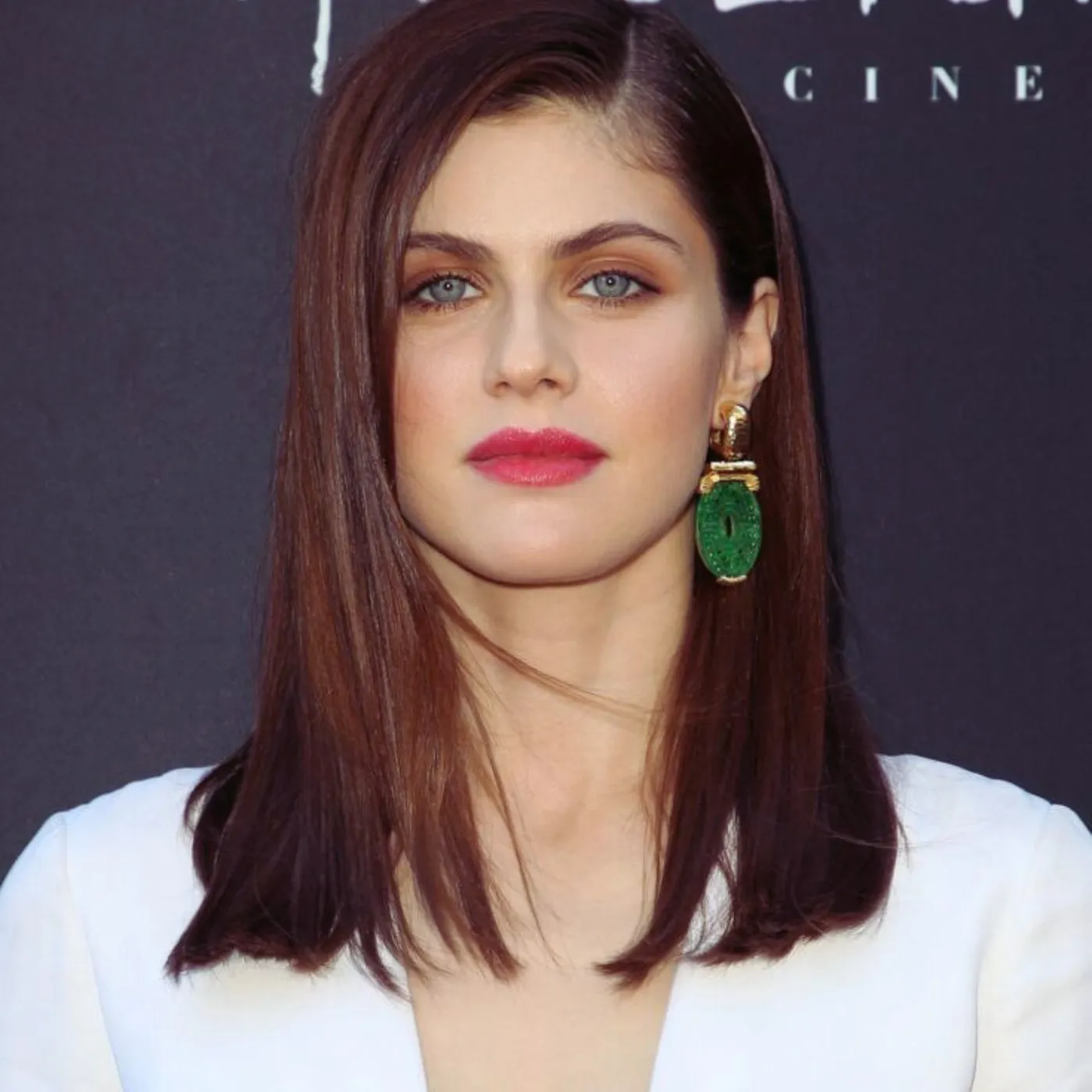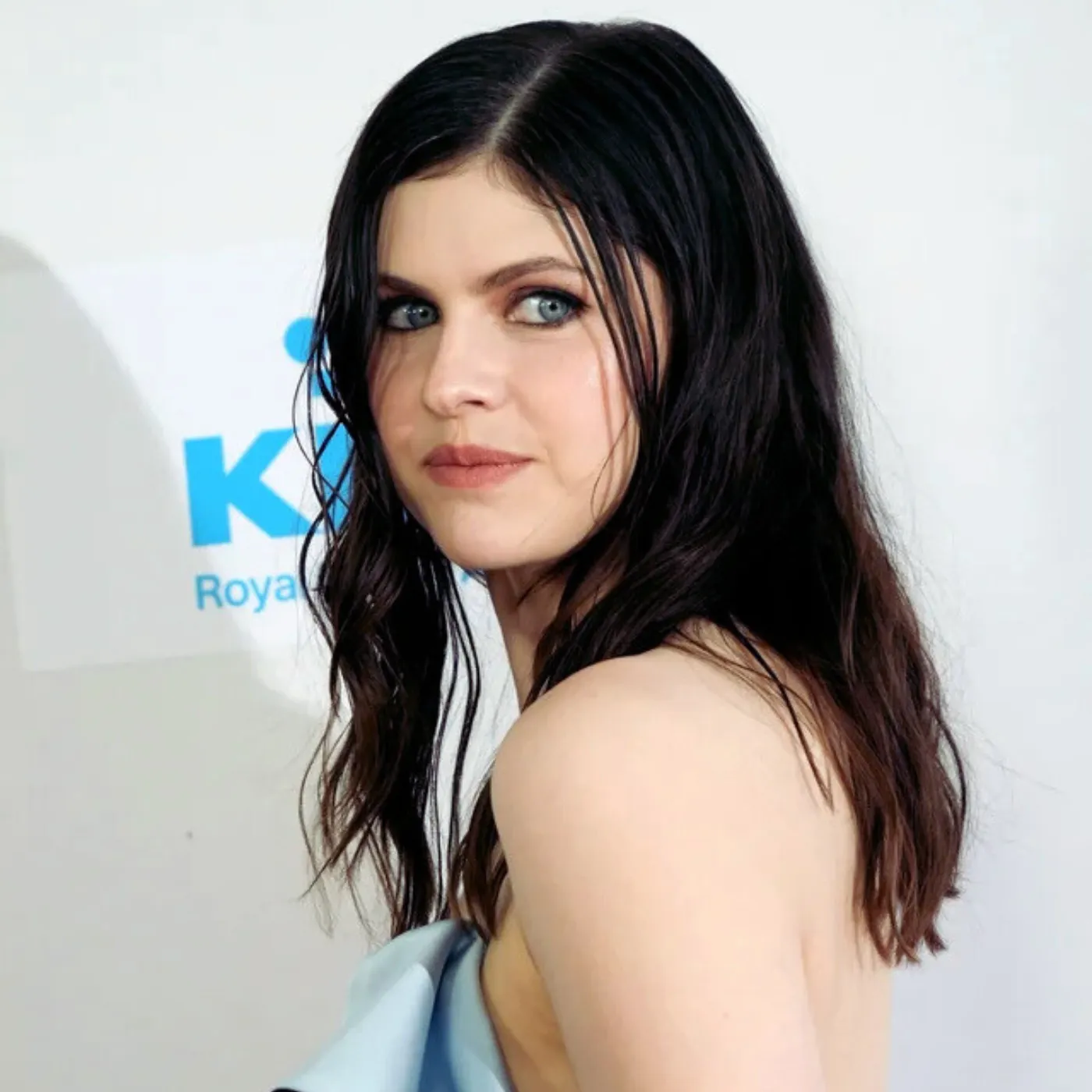

Alexandra Daddario’s Look Said Everything Before the Dialogue Even Started
In a film festival stacked with stars, experimental directors, and buzzy titles, it was Alexandra Daddario who emerged from the shadows of Tribeca 2025 and commanded the spotlight. Her lead performance in A Tree Fell in the Woods has sparked debates, fueled social media threads, and raised questions not just about storytelling but about emotional truth in modern cinema.

Directed by Jesse Rosenthal and written by Margot Bell, A Tree Fell in the Woods is a raw, quietly unnerving look at a holiday weekend gone wrong. The film opens like a breezy relationship drama and slowly twists into something much more emotionally claustrophobic. While the ensemble cast includes Josh Gad, Daveed Diggs, and Ashley Park, it is Daddario’s intense, calculating performance that anchors the narrative.
The Premise: When Truth Cracks Through the Facade
Two couples—longtime friends—gather at a picturesque lake house for a long weekend of wine, reconnection, and supposed healing. But when a long-buried act of betrayal surfaces, what was meant to be a getaway turns into a subtle but searing war of emotional attrition. The film leans into quiet tension rather than explosive revelations, letting its characters simmer in discomfort.
Josh Gad plays Matthew, a tech burnout trying to hold together the last threads of his marriage to Daddario’s character, Claire. Daveed Diggs and Ashley Park bring elegance and restraint as the seemingly picture-perfect second couple, whose cracks only become visible under pressure. But this is Claire’s movie, and Daddario takes the script’s ambiguity and weaponizes it.
Alexandra Daddario’s Performance: Unapologetic Precision
In one particularly quiet yet unforgettable scene, Claire sits alone in the kitchen, cutting fruit. There are no words. No music. Just silence—and a blade. The metaphor is clear without being clumsy. The emotion is buried without being absent. It’s this restraint that makes Daddario’s work so disturbing—and so magnetic.
Her character isn’t likable. She’s not meant to be. But in a cinematic world where women are often written to be redemptive or forgivable, Daddario dares to play someone whose only clarity comes from choosing not to explain herself. That kind of emotional opacity is risky. But it pays off. Big.
The Cinematic Language: Minimal, But Effective
Rosenthal’s direction is sparse, often letting the camera linger a few seconds too long on a scene after the dialogue has ended. It’s an uncomfortable choice—and that’s the point. The cinematography, handled by Sofia Liu, uses natural light to enforce the vulnerability of each space. There are no moody filters here. Just sunlight, silence, and small truths breaking the surface.
The editing, however, is where the film stumbles. Certain scenes drag. Others feel clipped, as if the emotional rhythm was sacrificed for runtime. The tone shifts unevenly, especially in the second act, where the film tries to juggle too many internal arcs at once. Some critics have already called it “confused.” That’s fair—but it’s also dismissive.
Because A Tree Fell in the Woods isn’t confused. It’s uncomfortable. And that’s exactly what it wants to be.

The Infidelity Twist: Predictable but Personal
Yes, the film is about infidelity. But it’s not the betrayal that shocks—it’s the reaction. Claire doesn’t scream. She doesn’t pack a bag. Instead, she stays. Observes. Calculates. And slowly begins to bend the weekend around her quiet revenge.
Josh Gad, often typecast as the affable comic, delivers a performance that is surprisingly hollow—in a good way. His Matthew is weak, evasive, and emotionally stranded. It’s a smart, risky move for Gad, and it pays off precisely because it allows Daddario to shine through contrast.
The relationship between Diggs’ and Park’s characters adds another layer, but at times it feels underwritten. The emotional stakes are there, but they often serve as a mirror rather than a driving force.
What Audiences Are Saying: Conflicted, Hypnotized, Triggered
Reaction has been anything but neutral. Early screenings led to whispered arguments in theater lobbies. TikToks dissecting Claire’s every expression have gone viral. Facebook threads debating whether her silence was power or manipulation now number in the thousands. Twitter (or X, if you still call it that) is aflame with hot takes:
“Alexandra Daddario just stared her way into my nightmares.”
“It’s not a film. It’s a slow-burning trap.”
“This movie gaslighted me and I loved it.”
Clearly, something hit a nerve.
Ashley Park and Daveed Diggs: Underused but Effective
Both actors deliver grounded performances, even if the script doesn’t give them enough to fully develop. Park in particular makes the most of her role, delivering a final scene that is soaked in quiet devastation. Diggs, with his signature calm and controlled delivery, offers the only genuine warmth in the entire film—and perhaps its only moral center.
But it is Claire’s unraveling that defines the movie. Every other performance is a reaction to her refusal to fall apart.
The Ending: No Closure, Just Consequences
In the final moments, Claire walks into the woods—literally. It’s a bold image, bordering on cliché, but somehow it works. She isn’t running. She isn’t lost. She’s simply done.
There’s no music. No narration. Just birdsong and wind. It’s less of an ending and more of a disappearance. A choice. One that leaves the audience rattled, unresolved, and quietly devastated.
Final Thought: A Controlled Fire in a Market of Sparkles
In an age of loud stories and louder protagonists, A Tree Fell in the Woods whispers—and still cuts through the noise. It doesn’t try to entertain. It tries to haunt. In a festival lineup where spectacle often overshadows soul, this film chooses stillness over showmanship and silence over shouting. And somehow, that decision makes it even harder to forget.
Alexandra Daddario, front and center, doesn’t just act—she absorbs. Her character’s discomfort becomes the viewer’s. Her emotional claustrophobia radiates beyond the screen, filling the theater with a tension you can’t quite name but definitely feel. In a sea of performers trying to be memorable, Daddario simply is. No theatrics. Just presence. Her restraint is its own kind of chaos—controlled, calibrated, quietly devastating.

While A Tree Fell in the Woods may stumble structurally or feel uneven in tone, Daddario’s performance holds it together, like a thread pulled through unraveling fabric. She doesn’t demand attention—she commands it. It’s not about volume. It’s about gravity. And with her at the helm, the film earns the weight it tries so hard to carry.
It’s not just a film. It’s a confrontation. It challenges the audience to sit in discomfort, to admit complicity, and to witness emotional infidelity without tidy resolution. And that’s precisely why it lingers. Not because it wraps up neatly, but because it doesn’t.
At Tribeca 2025, where premieres chase headlines and viral moments, A Tree Fell in the Woods dares to be small and significant. It rejects the algorithm, resists the scroll, and instead becomes a film that sneaks back into your thoughts weeks later—not with a bang, but with a whisper you can’t ignore.
Stay alert. This one’s not done with you yet.


















